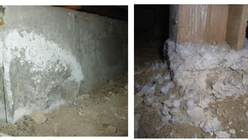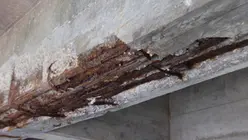Curing methods of concrete

Concrete is usually poured in different weather conditions and in various masses. The maintenance required to be applied to the concrete varies according to the environment and situation in which the concrete is located. Therefore, various curing methods have been developed. The following methods can be applied in order to continue the hydration of the cement and to prevent the concrete from drying out by losing water; In order to keep the concrete surface constantly moist, the need for water is met by spraying water with methods such as a hose or mechanical spraying system. The concrete surface is covered with a waterproof cover (such as nylon, polyethylene). By using chemical additives, water loss on the concrete surface is reduced.
Water curing is the most ideal curing method. It is carried out by applying water directly to the concrete. In this way, the concrete surface is kept constantly wet. Application of water cure should last a minimum of 7 days. The curing water must be clean and free of harmful substances. Water cure applications also vary within themselves. The concrete surface is constantly irrigated by spraying water with the spray method and this method is the best curing method. If the irrigation process is to be carried out at regular intervals, care should be taken not to leave the concrete surface dry during this process. It is important to start the water cure immediately after the end of the setting to prevent structural drying. However, water should be prevented from entering the fresh concrete in a way that will change the water/cement ratio. The only disadvantage of this method is that it is expensive and requires experienced practitioners. Another method is to create a puddle of approximately 5 cm thick on the concrete surface, thus preventing the concrete from losing water and providing a uniform temperature of the concrete. This method is generally applied on pavements, pavements and concrete roads. In addition, water-saturated water-retaining covers (wire cloth, cotton mat, etc.) are used to cover the concrete surface and evaporation is less.
Covering the concrete surface with nylon or polyethylene covers is not efficient for every application, but is necessary for some special applications. Its biggest advantage is that it can be used in horizontal and vertical elements. Polyethylene or nylon covers should be started as soon as the concrete gains sufficient hardness within half an hour at the most after the molds are removed. The covers used should be strong and flexible. Any tear in the covers used during the application reduces the effectiveness of the aperture cover. Concrete surface should be covered with dark colored materials in winter and light colored materials in summer months.
Chemical materials used for curing should be applied at a thickness of 0.2-0.25 kg/m2 . These materials can prevent adherence between mortar or fresh concrete and other surface coatings such as paint. The chemicals used vary according to the type of work. Chemical additives in aluminum or white color form a layer on the concrete surface. This layer formed minimizes the evaporation of water from the concrete surface. In addition, it allows the sun rays to be refracted and reflected from the concrete surface in hot weather. Chemical additives should never be applied to dry surfaces. Because concrete can absorb liquid compound. In addition, the surface should not be too wet. Water reduces the effectiveness of the chemical.
Accelerated curing applications are mostly used in cases where it is desired to dismantle the molds in a short time and to provide high compressive strength in the concrete. Accelerated curing methods are costly and difficult to implement. In addition, attention should be paid to the rapid heat loss that will occur after the application. It is generally used in in-situ concrete applications. Various techniques such as hot water cure, boiling water cure and steam cure have been developed as accelerated cure. Steam curing can be applied with two different methods as atmospheric pressure steam curing and high pressure (autoclave) steam curing. Atmospheric pressure steam curing is a method that is generally applied in prefabricated buildings and in cold weather, by closing the surrounding of the building. Autoclave curing is applied to small sized structures where very high early strength is required.














Comments